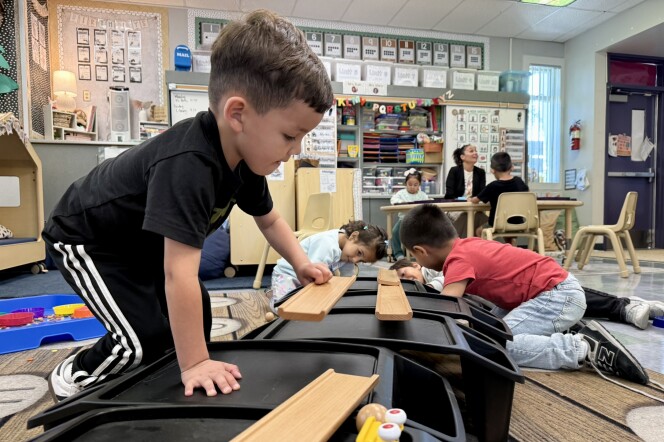With our free press under threat and federal funding for public media gone, your support matters more than ever. Help keep the LAist newsroom strong, become a monthly member or increase your support today.
Mad Cow Disease Found in Alabama
RENEE MONTAGNE, host:
Government officials have found another case of mad cow disease, this time, on a farm in Alabama. It's the third case of mad cow disease detected in this country. Agriculture officials say the animal's carcass was buried and was not used for animal or human food.
Joining me now to discuss this case and its ramifications is NPR's Science Correspondent Joe Palca. Good morning, Joe.
JOE PALCA reporting: Good morning, Renee.
MONTAGNE: How did the USDA become aware of this case?
PALCA: Well, as you said, there was an animal that was sick on a farm and the veterinarian was called in. And the animal wasn't able to walk any longer, so they killed it, euthanized it and buried the carcass and then sent a sample to a USDA testing lab, or a lab sponsored by the USDA, where the sample showed positive and preliminary signs of BSC, mad cow disease.
MONTAGNE: Well, you say positive and preliminary. How certain that this is mad cow disease?
PALCA: Well, the way it works is that the USDA is conducting a fairly large screening program where they've now screened about 650,000 cows in the last 18 months. And when they get an inconclusive or marginally positive test, they send it on for additional testing. And when they sent this to a specialized lab that does the more sophisticated testing, the more sensitive testing, it came back positive. There's still one more test outstanding that they are waiting for the results on, but they've decided that the first test, confirmatory test was enough to go ahead and say that this animal had mad cow.
MONTAGNE: And each time one of these few cases has come up, one thinks, is this just the start? What about government officials, what are they thinking here?
PALCA: Well, their argument is this is probably not the start. This is the third case that's been detected in this country. In this case, the good news for people, I suppose, is that the animal was over 10 years old, which means it was born before a ban on certain feed products was put in place. Mad cow is transmitted probably, most likely, there's still some uncertainty, but the most likely transmission route is from contaminated feed.
And it used to be that they would ground up animals and feed them back to cows. And that was how the disease was being transmitted in Europe. So the USDA said, okay, you can't grind up animals and feed them back to cow anymore. And that started in 1997. And so this cow was born before that and so they're saying, well, we haven't seen a younger cow get the disease, so we're feeling pretty good about the ban.
MONTAGNE: So then should people be worried about the safety of American meat? Doesn't sound like you think so.
PALCA: Well, nobody, even the consumer groups that are very concerned about the whole issue of food safety, they're not blowing whistles and saying, you know, watch out, there's a problem here, at least they're not saying that there's a big problem. And the reason is that it's just such a small risk of getting mad cow disease from tainted meat, the human form, that people feel it's just, there's not, it's not significant enough to worry about.
That said, there are things that people can do and there have been suggestions, for example, they don't know how old this animal is because they don't have exact records. They had to judge from the teeth. And they said, why don't we keep better records so we know we're animals came from?
MONTAGNE: And what about U.S. beef exports?
PALCA: Well, U.S. wants to start selling beef to Japan again, and this is not going to help at all. Korea was supposed to. They may say no now too. It's hard to say.
MONTAGNE: Joe, thanks very much.
PALCA: You're welcome.
MONTAGNE: NPR Science Correspondent Joe Palca. Transcript provided by NPR, Copyright NPR.








